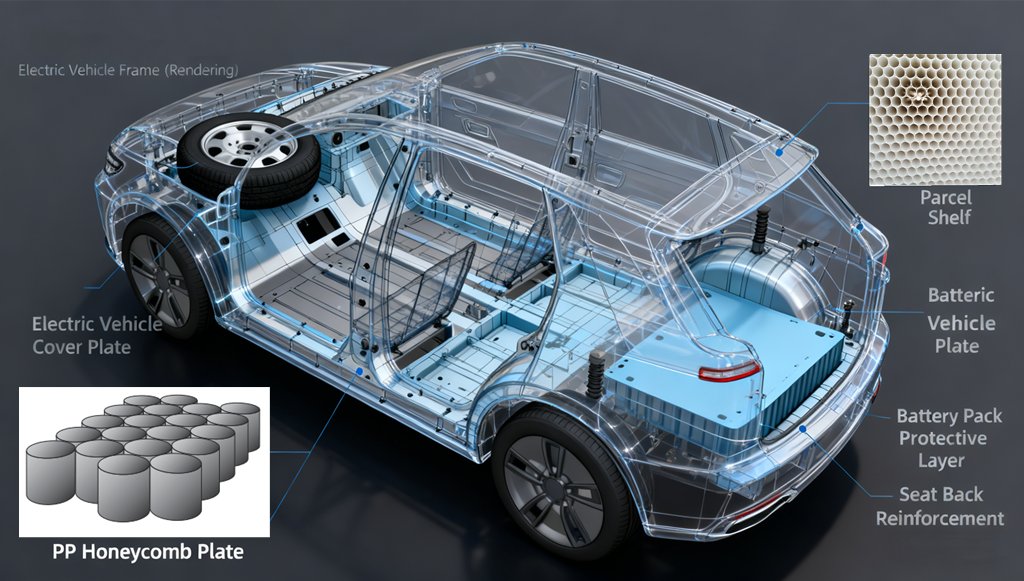The global electric vehicle (EV) market is no longer just emerging; it has arrived. However, as major players like Tesla, BYD, and Volkswagen ramp up production, they are hitting a common wall: Range Anxiety.
According to recent industry reports, consumer demand for longer driving ranges is reshaping automotive engineering. While battery technology is improving, batteries remain the heaviest component of an EV. This has triggered a new industrial arms race known as "Lightweighting."
For automotive engineers and Tier 1 suppliers, the equation is simple: Every 10% reduction in vehicle weight yields a 6-8% improvement in fuel economy (or range). This is where advanced materials, specifically Plastic Honeycomb Panels, are becoming the industry's secret weapon.

The Heavy Cost of Batteries
In a traditional internal combustion engine car, weight was manageable. In an EV, the battery pack alone can weigh upwards of 500kg. To ensure the vehicle is efficient, weight must be shaved off everywhere else—from the chassis to the interior trim.
Traditional materials like wood composites, solid plastics, or heavy metals are being phased out of vehicle interiors because they simply weigh too much.
The Polypropylene (PP) Honeycomb Solution
This demand for weight reduction has led to a surge in the adoption of Polypropylene (PP) Honeycomb Panels. These panels are engineered with a biomimetic hexagonal core structure that offers an exceptional strength-to-weight ratio.
Here is why industrial buyers are switching to plastic honeycomb for automotive applications:
Extreme Weight Reduction: PP honeycomb panels are up to 60% lighter than solid plastic sheets and wood composites of the same thickness.
High Rigidity: Despite being lightweight, the honeycomb structure provides excellent compressive strength and impact resistance.
Moisture Resistance: Unlike wood, plastic honeycomb does not rot, absorb water, or harbour mould—crucial for longevity.
Recyclability: As the EU and global markets push for a "Circular Economy," using 100% recyclable PP materials helps manufacturers meet strict environmental compliance standards.

Where is it used?
You might not see it, but PP Honeycomb is likely already in the next EV you drive. It is rapidly becoming the standard material for:
Spare wheel covers and trunk floors (replacing heavy wood).
Parcel shelves and sunshades.
Battery pack protective layers.
Seat back reinforcements.
Conclusion
The era of heavy, inefficient vehicles is over. As the EV market matures, the winners will be the manufacturers who can deliver maximum range with minimum weight.
For procurement officers and engineers, choosing the right core material is no longer an option—it is a strategic necessity. Plastic honeycomb panels provide the perfect balance of durability, lightness, and sustainability required for the next generation of mobility.

